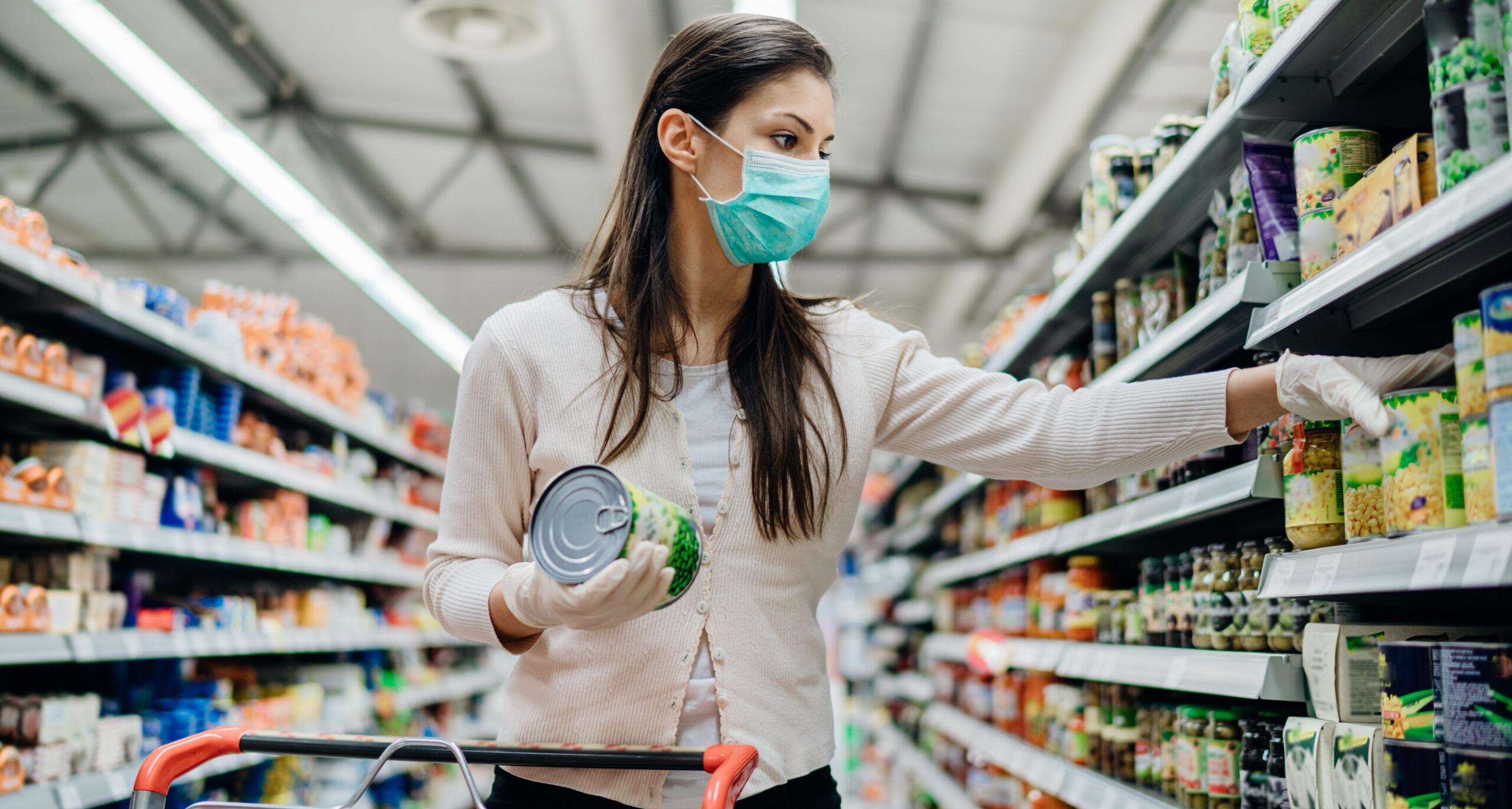While we’re all doing our best to stay home and avoid public areas, you can’t avoid the occasional trip to the grocery store. Even if you’re using a grocery delivery service, those potentially-infected grocery bags and food packaging are still entering your home. The purpose of this article is to inform you about the best cleaning and disinfecting practices that will keep your food, home, and family safe and coronavirus-free.
The Unloading Process:
Before bringing bags into your home, find, clean, and disinfect a surface onto which the grocery bags will be placed. Split the surface into two regions; sanitized and unsanitized goods. As you unload the contents of each bag, clean and disinfect each good, then place it on the sanitized half of the surface. Place the empty bag into a trash or recycling bin. Once all bags have been emptied and disposed of, empty the bin into an outdoor trash or recycling bin to lessen the risk of leaving the coronavirus in your home. If you’re using reusable bags (which are temporarily banned from some stores) make sure that you thoroughly wash and disinfect the bag before replacing it in your home.
Fruits & Veggies:
When washing fruits and vegetables, place under running (preferably hot) water for at least 20 seconds, much like you should be doing for your hands. Using soap is not required, but can be helpful in cleaning off any remaining germs. If you do choose to use soap, however, be sure to thoroughly wash it off to prevent any health hazards. DO NOT USE BLEACH.
Double-Packaged Goods:
Goods that are prepared with 2 layers of packaging may be removed from the external layer of packaging (unless otherwise noted on the food.) Good examples of this are cereal or snacks, which can be removed from it’s cardboard box and stowed away in it’s plastic bag, which has not been touched since it’s manufacturing, drastically reducing the chances of any living virus on its surface. The external packaging, which may have been touched by other shoppers, should be disposed of in an outdoor bin.
In conclusion, there should be no external layer left uncleaned. While grocery stores are doing a fantastic job of sanitizing shelves, limiting crowds, and taking other precautionary measures, they can’t necessarily clean each individual item, and it only takes ONE sneeze, cough, or uncertain shopper to infect any item. While it may be time-consuming and tedious, the 10 minutes spent cleaning and disinfecting potential traces of coronavirus are worth it.
More Shopping Tips:
Wipe down shopping cart handles before use
Wear gloves and masks (if accessible) while in the store
If an elder needs groceries, make a list and go shopping for them instead
Use touch-free payment methods like Apple Pay or Samsung Pay
Know what you want. Don’t pick anything up until you’re certain you’re going to buy it.
Keep Listening to the Experts
While we know a thing or two about coronavirus cleaning, we source 100% of our advice from professional sources. Between the CDC, and the FDA, plenty of expert knowledge exists around safe shopping practices.
A special thanks also goes out to Dr. Jeffrey VanWingen, who provided the most in-depth grocery cleaning process explanation. For the full video, click here.


